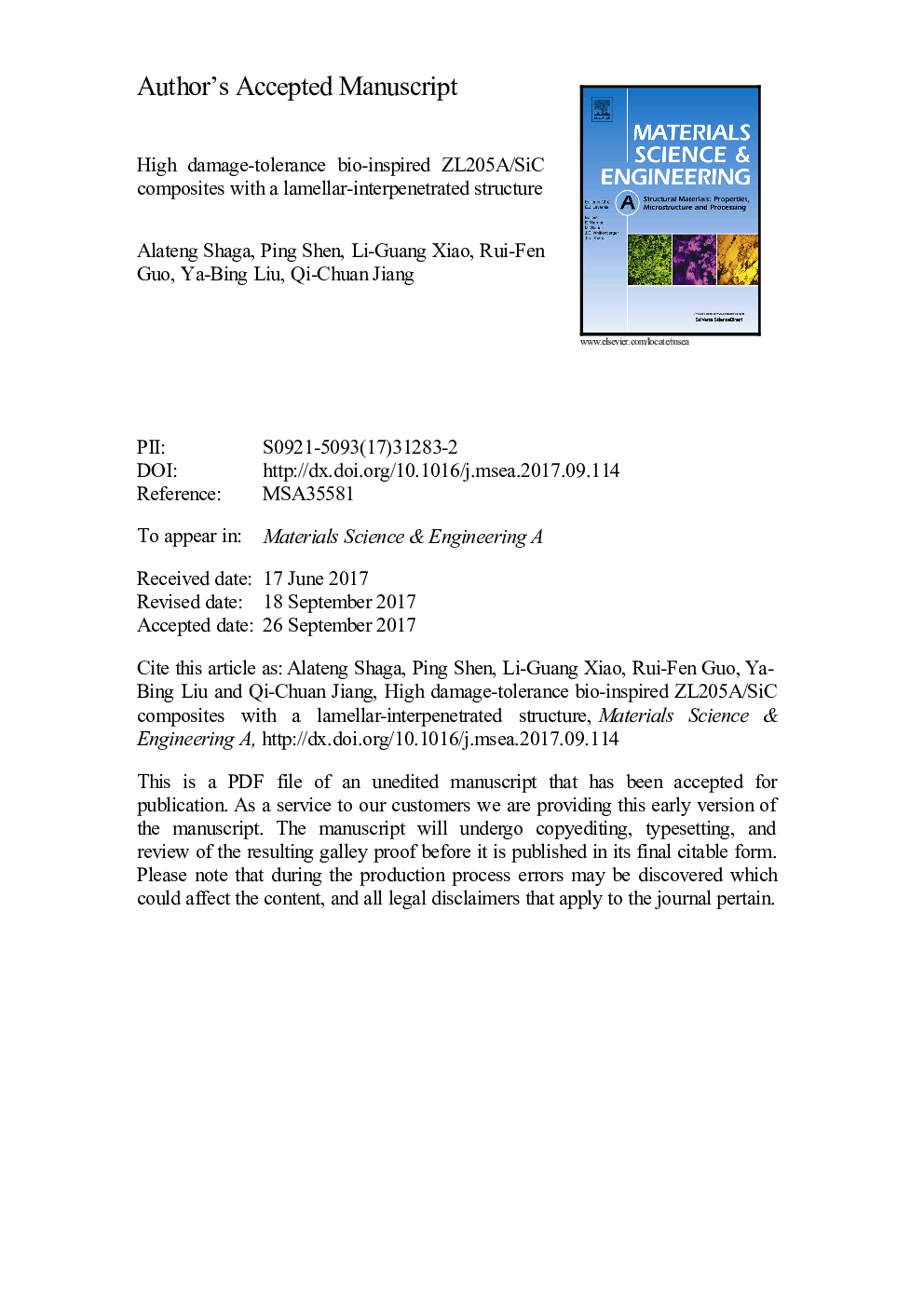| Article ID | Journal | Published Year | Pages | File Type |
|---|---|---|---|---|
| 5455114 | Materials Science and Engineering: A | 2017 | 24 Pages |
Abstract
Novel bio-inspired ZL205A/SiC composites with a lamellar-interpenetrated structure were successfully fabricated via gas-pressure infiltration of a commercial ZL205A alloy into freeze-cast porous SiC scaffolds. The influences of initial ceramic content (20, 30 and 40 vol%) on the microstructure and damage-tolerance behavior of the resultant composites as well as their toughening mechanism were investigated. With an increase in the ceramic content in the composite, the flexural strength and fracture toughness in the longitudinal direction gradually decreased; whereas, in the transverse direction they showed a first increase and then decrease but their elastic modulus increased. The composites displayed significant damage-tolerance anisotropy, with higher strength and toughness in the longitudinal direction (parallel to the lamellae) than that in the transverse direction (perpendicular to the lamellae). In the longitudinal bending, the ZL205A/20 vol%SiC composite exhibited the maximum flexural strength (760 MPa) and the largest fracture toughness (33.0 MPa m1/2). The excellent damage tolerance of the composites was attributed to multiple toughening mechanisms such as plastic deformation in the matrix alloy, crack blunting, deflection and branching, and uncracked-ligament bridging of the ductile alloy layers. However, in the transverse bending, the crack propagated along the ceramic layer in the composites and thus greatly weakened their damage-tolerance capability.
Related Topics
Physical Sciences and Engineering
Materials Science
Materials Science (General)
Authors
Alateng Shaga, Ping Shen, Li-Guang Xiao, Rui-Fen Guo, Ya-Bing Liu, Qi-Chuan Jiang,
